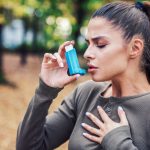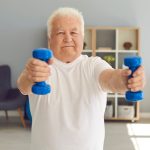Try this pop quiz:
- Is SPF 45 sunscreen three times stronger than SPF 15 sunscreen? Does it last three times longer?
- Do sunscreens provide better UVA protection than UVB protection?
- What works better, sunscreens or sunblocks?
- Do “broad-spectrum” sunscreens protect against all UV rays?
f you're not certain of the answers, join the club. Recent research shows that people who buy sunscreens aren't sure exactly what protection they offer, and are cloudy about the technical terms on their labels. A survey of 235 women who bought sunscreen found they did not know the difference between UVA and UVB or between SPF and UVA. They mistakenly believed that higher SPF ratings meant stronger UV protection, not longer protection, and the concept of “broad-spectrum” protection confused them further.
The U.S. Food and Drug Administration is urging sunscreen manufacturers to clarify the claims made on their products so that the public can make more informed purchases. In the meantime, we'd like to do our part. Here, from medical experts on The Skin Cancer Foundation's Photobiology Committee, is a concise primer on the ABC's of sunscreen protection:
UVA (ultraviolet-A): long- wave solar rays of 320-400 nanometers (billionths of a meter). Although less likely than UVB to cause sunburn, UVA penetrates the skin more deeply, and is considered the chief culprit behind wrinkling, leathering, and other aspects of “photoaging.” The latest studies show that UVA not only increases UVB ‘s cancer-causing effects, but may directly cause some skin cancers, including melanomas.
UVB (ultraviolet-B): short-wave solar rays of 290-320 nanometers. More potent than UVA in producing sunburn, these rays are considered the main cause of basal and squamous cell carcinomas as well as a significant cause of melanoma.
Sunblocks and sunscreens: Sunscreens chemically absorb UV rays, sunblocks physically deflect them. Sunscreen has long blocked UVB effectively, but until recently provided less UVA protection. New ingredients such as octylcrylene and the benzophenones have improved sunscreen's defenses against shorter UVA rays, and the revolutionary chemical avobenzone (Parsol 1789) works against all UVA wavelengths.
Sunblocks have also markedly improved. New preparations such as micronized titanium dioxide are less conspicuous on the skin and offer substantial protection against both UVA and UVB.
SPF (sun protection factor): measures the length of time a product protects against skin reddening from UVB, compared to how long the skin takes to redden without protection. If it takes 20 minutes without protection to begin reddening, using an SPF 15 sunscreen theoretically prevents reddening 15 times longer — about 5 hours. (Actually, it may take up to 24 hours after sun exposure for redness to become visible.) To maintain the SPF, reapply sunscreen every two hours and right after swimming.
The Skin Cancer Foundation recommends SPF's of at least 15, which block 93 percent of UVB. While SPF's higher than 30 block only 4 percent more UVB, they may be advisable for sun-sensitive individuals, skin cancer patients, and people at high risk of developing skin cancer. They also allow some margin for error if too little sunscreen is applied.
While SPF is the universal measurement of UVB protection, no comparable standard exists for UVA. Scientists worldwide are working to develop a standardized testing and certification method to measure UVA protection.
Broad-spectrum protection: The phrase indicates that a product shields against UVA as well as UVB. It does not guarantee protection against all UVA wavelengths, however. Most broad-spectrum sunscreens and sunblocks with an SPF of 15 or higher do a good job against UVB and short UVA rays; if they also contain avobenzone, zinc oxide, or titanium dioxide, they should be effective against the entire UVA spectrum.
Even with the ideal sunscreen, some UV rays can get through to your skin and cause damage. The Skin Cancer Foundation considers sunscreen one part of a comprehensive sun protection program, along with sun-protective clothing, sunglasses, shade, and sun avoidance from 10A.M. to 4 PM.
For more information on prevention and early detection of skin cancer, call the Skin Cancer Foundation at 1-800-SKIN-490.









